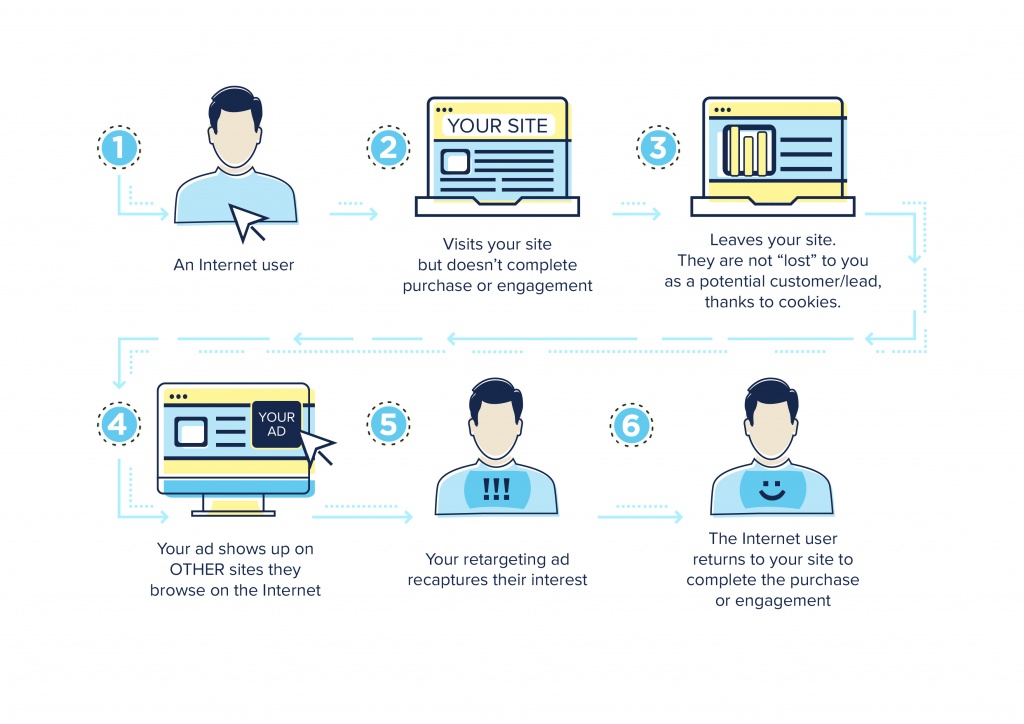
Introduction to Retargeting
Are you familiar with the concept of retargeting? I’ll bet it’s happened to you. You’re online shopping for an item…let’s say a new pair of shoes. You examine the features, check the price, you may even click to add it to your shopping cart, but you never complete the purchase. The next time you’re online you’re served an ad for that exact pair of shoes. Weird? Nope, that’s a form of retargeting.
Retargeting, sometimes known as remarketing, is the practice of serving ads based on prior engagement. For most websites, only two percent of web traffic converts (or makes the sale) on the first visit. Retargeting is a tool that helps companies reach the 98% of users who don’t convert right away. There are other forms of retargeting too—search retargeting, email retargeting and customer relationship management (CRM) retargeting.

How does retargeting work?
So how did they know you were interested in those shoes? The answer is—cookies. Cookie-based advertising allows sites to “follow” users across the web. The cookie stores the site visit, but not any sensitive information about the user, such as name, address or any other data that might personally identify the visitor. If a cookied visitor leaves (or bounces) your website and visits another site, an ad can be served to them that will keep your brand top of mind and encourage the visitor to return to your site.
What are the benefits of using retargeting ads?
The benefits of retargeting are significant:
- Retargeting has a higher ROI than other forms of digital advertising
- Visitors are 70% more likely to convert after viewing a retargeted ad
- Retargeted ads led to a 1,046% increase in branded search
- 26% of customers return to a site through retargeting
Who can benefit from retargeting?
Retargeted advertising is the favorite tool of ecommerce companies. It’s one of the most effective ways to bring back bounced traffic and combat shopping cart abandonment. If you’ve ever shopped on Zappos or Amazon, you’ve been retargeted. Companies can also use a retargeting strategy to help stay in front of leads during longer purchase cycles like shopping for a car or other high dollar items. Schools and universities can utilize retargeting to increase enrollment and alumni support. Political candidates often use retargeting to secure donations. It’s also very useful for special events, like concerts, to increase ticket or merchandise sales.
Hitting the retarget
It’s important to take into account where users are in their purchase journey. Did they abandon your site at the home page, or after a detailed review of a particular product? Your creative and messaging strategy should be segmented and targeted to where the user abandoned.
Carefully consider the creative you use for retargeting. Remember, you’re reaching out to users who are already familiar with your brand. A few points to consider when setting up retargeting advertisements:
- Acknowledge the familiarity with the brand—showcase the item they abandoned
- Use a harder sell—instead of “Learn More” try “Buy Now”
- Offer a discount to close the deal—“Act Now & Get 10% Off”
- Test multiple versions of creative to avoid creative fatigue
- Once you’ve closed the sale, remember to remove those users from the retargeting pool